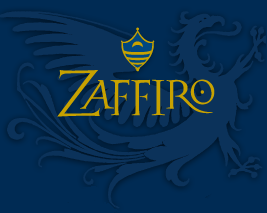This spring I had the opportunity to be a judge for an upcoming fine art and craft show. For those of you who don’t know about the craft show process, let me explain a few things first.
Approximately six to eight months prior to a show, an application period opens. There is a prospectus usually containing information about the show and the application process (this is all done online of course). Usually, a show requires four to five images, a booth image and an artist statement all for a small fee. Sounds simple, huh? Welcome to the byzantine and mysterious world of juried craft shows…
One year you get into a show and win a best of show award, but for the next three years they reject you, no number on a waiting list, nothing. What is going on? There is much arcane and closely guarded knowledge specific to every show. You can’t game the system, but you can learn its idiosyncrasies and adapt your strategy.
For example, how are the images viewed by the jury? If you submit five, are they viewed in a line or viewed three over two? What difference does this make, you ask? Well, your five images need to create a cohesive narrative of your work, with a balance of color, form and style. In the five in a line scenario, the third image is the middle image (this should be one of, if not the strongest image) as the eye is naturally drawn towards the center. In the three over two scenario, the second image is the middle image (as opposed to being a transition image in the five in a line scenario). This is only the tip of the iceberg as you can take workshops and buy entire books and CDs on how to apply to shows. To any artist reading this – Bruce Baker has invaluable information – look him up.
So, you either agonize over a new arrangement of images or submit a grouping that has worked in the past; then you review and possibly edit/update your artist statement depending on what is required: 1000 characters or 100 words, always anonymous, and add on, usually as an afterthought, the booth slide. Click ‘apply’ and off it goes into the ether…
This is my second time being “beyond the veil” and as an artist, it is a brutal jolt of reality. All jury processes and compositions are different, but if the photography of the subject matter isn’t professional and compelling, the artistic integrity of the subject matter will not be conveyed. We were in a computer lab at a local college, simultaneously viewing the images on a standard computer screen in front of us and projected on a large screen at the front of the room. As preparation for the jurying process, we had viewed all of the images at least once and made notes on all of the anonymous applicants prior to gathering as a group. I don’t think this is typical of most juries, but it honors the time and effort of an applicant. During an average jurying weekend, an artist can expect their work to be viewed for approximately 30 seconds or less – a snap decision based on a first impression of the quality of work and the selection of images.
Because we were prepared, we were able to dig a little deeper into each artist’s presentation. Jurors with expertise in each field spoke to the strengths and weaknesses of technique and style. How well did the artist statement and individual image descriptions convey what we were seeing? We heavily critiqued the booth image on presentation of craft and how closely the selected jury images matched what was being shown in the booth. And, unfortunately, how closely did potential exhibitors follow the prospectus instructions. It was surprising how many people willfully disregard instructions.
As jurors, we had divergent views and there was lively discussion. Some strong artists immediately were apparent, but others needed an advocate who could convey the subtleties of skill and technique on display.
I’m looking forward to seeing who makes the cut after all of the scores are tabulated. I’m also revamping my booth so I can get a new booth image shot this year.


